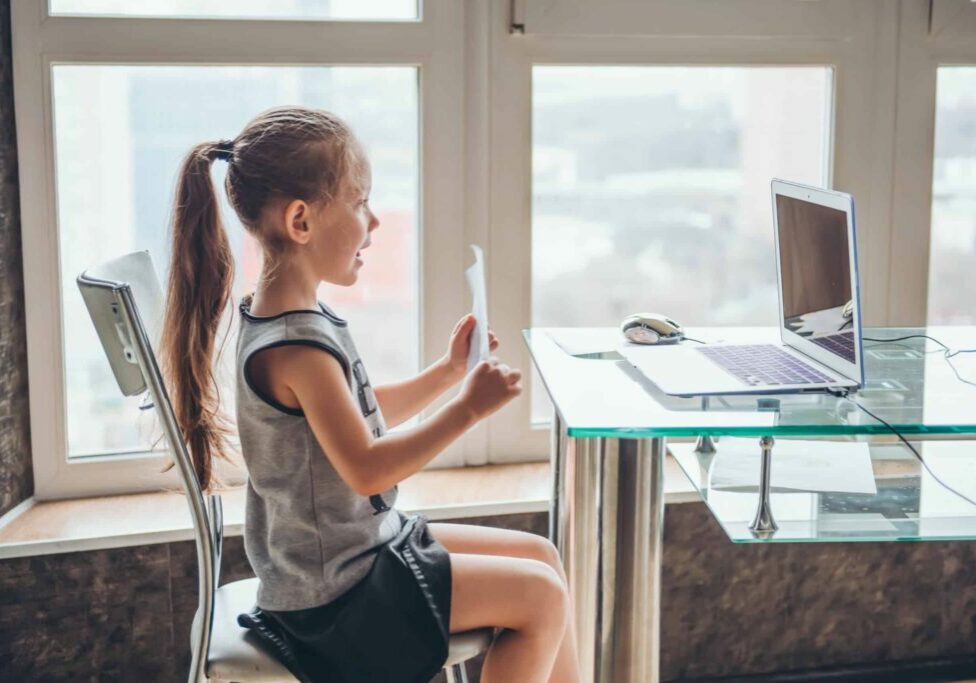Students just want you to care
By Karalyn Olsen, Stockton University, Publications Chair of NJEA Preservice
ince March of 2020, we have gradually adjusted to this new normal. While the phrase “unprecedented events” initially justified the make-do attitude exhibited by teachers and students, I view this time as a turning point for education. It is time to embrace the change.
Back in August, I prepared myself for the semester to come. As a member of Stockton University’s mentorship program, I worked with fellow classmates to give incoming students helpful tips for their academic endeavors. One of those tips included the perception of stress. We urged students to view their stress as excitement, a concept I try to apply to my own life. As many schools transition from fully online learning to a hybrid style, this mindset may prove useful. Change comes with many challenges, but one must not forget the foundations for an engaging classroom environment. It is the personal connections we make that make all the difference.
I have a dual perspective of online learning. Based on my experience as a preservice teacher, my clinical observations, and my mentor teacher’s perspective, online learning poses obstacles for everyone involved. As a college student, I experience online learning from the other side of the desk as well.
I am enrolled in a combination of online asynchronous courses and online synchronous courses. While I find online asynchronous classes valuable for those who have strong intrapersonal intelligence, this variation of online learning neglects the importance of social interaction. As a future teacher, I am constantly looking at learning theories to include in my lesson plans. I understand how important social interactions are for students’ academic progress. Although online synchronous courses allow students to see each other, it is easy to neglect the social aspect of learning in these virtual environments as well.
Luckily, my classes do not require me to stay on a virtual platform every day for four to five hours, but that is a reality for many college students, and it is a reality for the students I observe. They do not get the opportunity to pass a friend in between classes or sit with each other at lunch.
After an interview with my mentor teacher, it is evident that online instruction is just as strenuous as online learning. My mentor teacher emphasizes the lack of communication as a major hindrance. He also finds it difficult to gauge students’ understanding. Because he shares his screen while he teaches, he cannot view students’ facial expressions.
Since COVID-19 persists, my mentor teacher has learned how to use a variety of web tools for the time being. He admits before the pandemic he did not even use Google Classroom. Now, not only does he use Google Classroom, but he also uses Pear Deck, Jamboard and Loom. While learning how to use these online platforms probably induced stress, he will add these web tools to his pedagogical toolbox even after we return to our schools full time. That is something to be excited about.
After attending the NJEA workshop “Navigating Challenges in Education 2020,” I learned what other educators have been doing to reenergize their online classrooms. Teachers explained the importance of making personal connections with students. For instance, one teacher makes a point to say good morning to each student as they enter the virtual classroom. Another teacher revealed that students use song lyrics to describe how they are feeling. While educators credited the online platform known as Zoom for its versatile nature, many teachers established Pear Deck as their favorite web tool because of its interactive qualities.
It is worth noting that these teachers did not solely rely on online platforms to engage students. Instead, these teachers highlighted how they greet and interact with their students. They implemented social activities to engage their students.
Early on in my college career I had a professor explain that “students just want you to care.” Now more than ever, these words float around in my head. Overall, this is a stressful time, but we need to turn that stress into excitement. As another beloved teacher of mine would say, we need to “make it happen.”
Educators should take pride in all the web tools they have learned how to use, but they should not let online platforms diminish the importance of social interactions. In my eyes, there is no web tool that can make up for the personal connections we make with other people.
